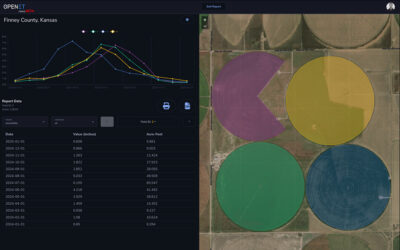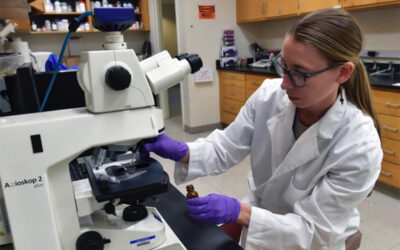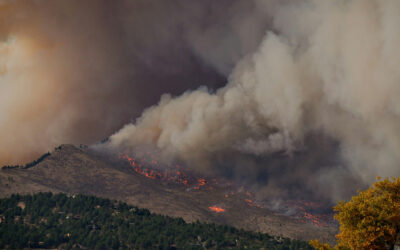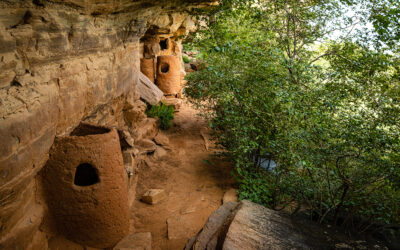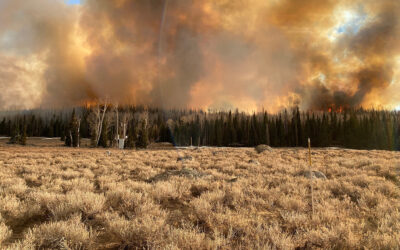Our Blog
Kristin VanderMolen Receives 2025 Rising Researcher Award from the NSHE Board of Regents
DRI scientist Kristin VanderMolen, Ph.D., has been awarded the 2025 Rising Researcher Award in recognition of her outstanding early-career accomplishments and potential for advancing scientific knowledge in the field of applied anthropology.
FARMing with Data: OpenET Launches New Tool for Farmers and Ranchers
A NASA, DRI, and U.S. Geological Survey (USGS)-supported research and development team is making it easier for farmers and ranchers to manage their water resources. The team, called OpenET, created the Farm and Ranch Management Support (FARMS) tool, which puts timely, high-resolution water data directly in the hands of individuals and small farm operators.
DRI Invites Nevada Families to Science and Literacy Events for Pre-K Students
DRI’s STEM Education Program is holding free events focused on developing literacy through engaging science activities for Pre-K children 5 and younger throughout Nevada. Through hands-on experiments, story time, and interactive games, the events will bring ecology and electricity to life for the whole family. Each child will also receive free books to take home (while supplies last).
Meet Alexa Daniel
Alexa Daniel, M.Sc., is a hydrogeologist and Assistant Research Scientist who joined DRI this past December. Based at Reno’s campus, she will be spending most of her time over the next two years developing water resource plans for Nevada’s rural counties. In the following interview, Daniel shares her wide range of experience studying water resources in the West, her favorite book, and an invitation to a network event she’s spearheading for young professionals.
Brittany Kruger, Ph.D. receives the 2024 Harold J. Kruse Farming and Environment Award
Brittany Kruger, Ph.D. was selected as the 2024 recipient of this award for her proposal “Nitrogen Dynamics in Arid Agriculture: Optimizing for both Farmer and Environment.” The Harold J. Kruse Farming and Environment Award was established in 2022 by Stephanie Kruse, DRI Foundation Trustee, to honor her father’s legacy and recognize his farming business sense. Thank you to Stephanie Kruse and her brother, Norm Kruse, for their continued support of this award.
Weather Whiplash is Amplifying Wildfire Risk
While fires engulfed large swaths of southern California in early January, destroying more than 16,000 structures, taking at least 29 lives, and choking the air with smoke, a new study about weather whiplash was released. Co-authored by DRI’s Christine Albano, the research examined how a warming climate is creating an atmosphere more prone to extreme weather. Now, Albano and her co-authors have released a new report that applies the knowledge gained from January’s study to the recent fires, analyzing the broader climatic context that contributed to the unprecedented infernos.
New Study Traces Indigenous Population Shifts in North America Before Europeans
DRI’s Erick Robinson, Associate Research Professor of Climate and Archaeology, co-authored a new study that provides insight into North America’s Indigenous communities prior to European contact. The research found that although Indigenous populations varied regionally, the continent saw a population peak around 1150 A.D. before experiencing declines, likely stemming from drought, disease, emigration and warfare. A brief recovery around 1500 A.D. was followed by a sharp decrease upon the arrival of Europeans.
Floods, Droughts, Then Fires: Hydroclimate Whiplash is Speeding up Globally
DRI’s Christine Albano co-authored a new study that examines how a warming climate is creating an atmosphere more prone to extreme weather. This “hydroclimate whiplash” is evident in California’s recent weather, with winters filled with repeated atmospheric river storms driving the plant growth that the dry summers then parched, providing plentiful fuel for explosive wildfires.
What We Know About Wildfire Risk and Prevention
DRI scientists conduct a wide range of research on wildfire related topics to help policymakers, fire managers, and community members navigate challenges to public safety and health. In this Q&A, a selection of our scientists answer some of the most pressing questions about the environmental conditions that lead to the most devastating blazes and offer previews into some of their most relevant research.
Our Newsletter

